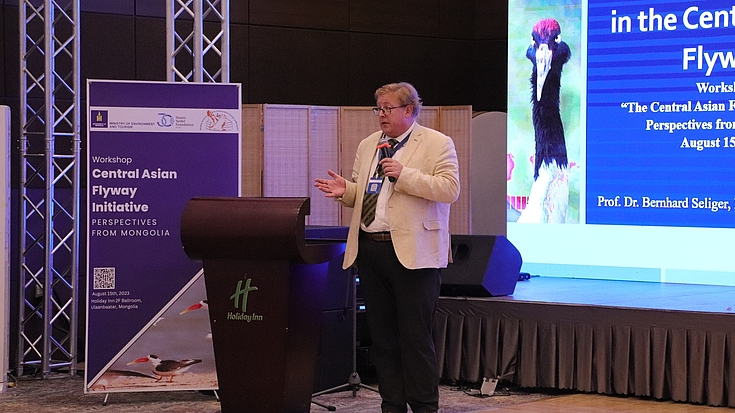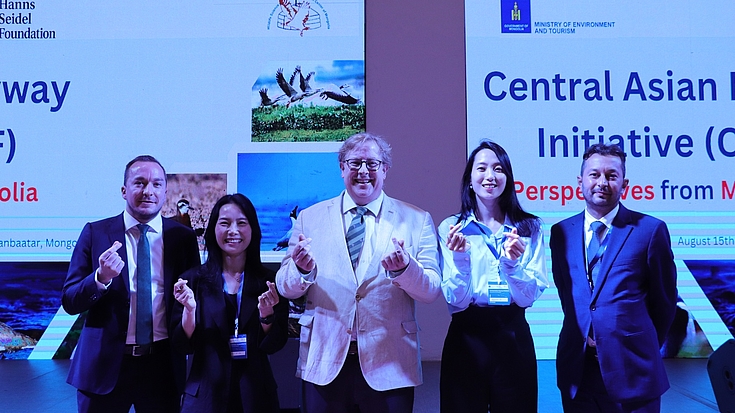Event
International Seminar in Mongolia Highlights Efforts to Protect Avian Biodiversity Along Central Asian Flyway

Last week, the "Central Asian Flyway (CAF) Initiative – Perspectives from Mongolia" workshop took place, bringing together a diverse array of experts and researchers from ten different countries. The seminar was supported by various stakeholders, including the Mongolian Ministry of Environment and Tourism (MET), the Hanns-Seidel Foundation, the Wildlife Science and Conservation Center of Mongolia, as well as the IUCN Goose Specialist Group. It was held in conjunction with the CMS (Convention on Migratory Species) Partners Meeting scheduled for February 2024 in Uzbekistan.
Opening speakers G. Enkhmunkh, Head of the Environmental Assessment Department on behalf of Minister B. Bat-Erdene, and Helmut Kulitz, the designated Ambassador of the Federal Republic of Germany to Mongolia, emphasized the urgent need for global collaboration among national governments, international organizations, NGOs, and other stakeholders to protect threatened biodiversity worldwide. They particularly highlighted Mongolia's active participation in these efforts.

The seminar brought together over fifty researchers from countries such as Mongolia, Germany, South Korea, China, Russia, India, the Netherlands, and Sweden. It provided a platform for distinguished speakers to address various topics. D. Ariuntuya from the Mongolian Ministry of Environment and Tourism presented Mongolia's perspectives on the CAF Initiative. Dr. Suresh Kumar from the Wildlife Institute of India shed light on the significance of connectivity in bird migration from an Indian perspective. Dr. Tilman Schneider from the Convention on Migratory Species (CMS) provided insight into progress towards establishing an institutional framework for the Central Asian Flyway.
Hyeseon Do, former Senior Programme Officer of the East Asian-Australasian Flyway Partnership (EAAFP), discussed institutional options from other flyways and drew lessons from the EAAFP. Prof. Dr. Bernhard Seliger from the Hanns-Seidel Foundation Korea Office spoke about future cooperative opportunities and the role of NGOs within the context of the CAF Initiative. Dr. B. Nyambayar from the Wildlife Science and Conservation Center of Mongolia underscored the importance of international collaborations and how birds can connect countries and landscapes.
The seminar's focal point was the promotion of transboundary nature conservation along the Central Asian Flyway. This encompassed collaboration among different countries and regions, not only along the Central Asian Flyway but also other significant migration routes like the East Asian-Australasian Flyway (EAAF). As part of their international climate and environmental program, the organization supports the CAF Initiative and actively advocates for enhanced international cooperation. The seminar provided a crucial platform for discussions about this partnership and the measures to preserve avian species along these critical migratory pathways.
